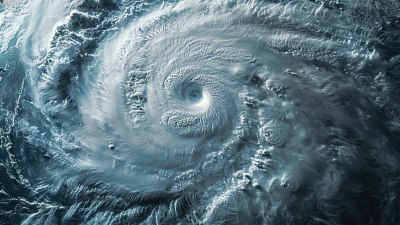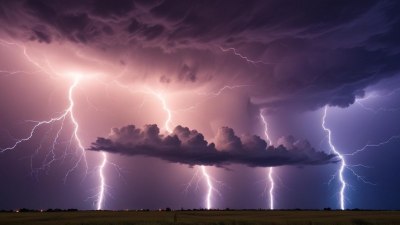The Secret Weather Language of Sailors and How It Saved Lives
Explore the unique weather language of sailors, its history, and how it has crucially influenced maritime safety.

Throughout history, the sea has been both a friend and a foe to sailors. As they set out to conquer the vast waves, these mariners developed a unique language that transcended mere words; it was a shorthand that pulled from centuries of experience with the changing skies and unpredictable waters. This secret weather language, often passed down through generations, was not only a tool for communication among sailors but also a critical element that helped to save countless lives at sea. In this exploration, we delve into the fascinating depths of this weather dialect, its components, its evolution, and the vital role it played in maritime safety.
Origins of the Sailor's Weather Language
The origins of the sailor's weather language can be traced back to ancient mariners who relied heavily on nature’s signs to navigate the seas. In a time before advanced technology and weather forecasting, sailors had to be acutely aware of their environment. They developed a rich vocabulary that consisted of terms describing various weather phenomena, cloud shapes, and ocean currents. For instance, they learned to recognize the subtle differences between a cirrus cloud indicating fair weather and a cumulus cloud suggesting impending storms. This intimate relationship with nature shaped a unique vernacular that was both practical and poetic.
Components of the Language
At the heart of the sailor's weather language are specific phrases and terms that describe identifiable weather patterns. For example, a sudden drop in temperature could be indicated by the phrase 'a chill in the air,' signaling an approaching front. Sailors often personified the weather, referring to storms as angry gods or temperamental spirits. This not only made their communication more vivid but also shared a sense of reverence for the ocean they traversed. The common phrase 'the sea speaks' encapsulates this belief in nature’s voice and its impact on their journey.
The Cloud Code
Clouds hold significant meaning in the sailor's weather language. Each cloud type and formation can provide critical information about upcoming weather. For instance, a 'mackerel sky' indicates a change in the weather is on the horizon, while the sight of 'mares' tails,' long wispy clouds, often signals wind and impending rain. The ability to read these clouds and understand what they forecast is a skill that has been cultivated through generations of sailing experience. Sailors often taught their apprentices the 'cloud code,' emphasizing its importance in ensuring safety at sea.
The Role of Wind
When it comes to navigating the sea, wind is a sailor's most important ally—and their fiercest enemy. Wind patterns can change rapidly and dictate not just the speed of a vessel but its very direction. Sailors utilize many terms related to wind in their weather language. Expressions like 'a fair wind' or 'a brisk wind' denote ideal sailing conditions, whereas descriptions such as 'dead calm' or 'a howling gale' warn of dangerous situations. Understanding the wind’s language is crucial for making informed decisions that can mean the difference between safe passage or disaster.
Listening to the Ocean
The ocean itself speaks through its waves, and skilled sailors learn to interpret these signals. The sound of crashing waves can signify an approaching storm, while the gentle lapping of water could indicate calm seas ahead. Sailors often develop an instinct for the rhythm and cadence of the ocean, allowing them to sense changes in the environment before they manifest visibly. The ability to 'listen' to the sea and respond accordingly has been a cornerstone of successful maritime navigation.
The Influence of Folklore and Tradition
Within the sailor's weather language is a deep-rooted tradition of folklore that informs how sailors perceive and respond to weather. Stories of shipwrecks and brave rescues are often recounted to impart wisdom about the elements. Many sailors would share superstitions and rhymes about the weather, using them as mnemonic devices to help remember essential signs of changing conditions. These traditions serve not only as cautionary tales but also foster a sense of community among sailors, binding them to a shared history and culture.
Case Studies of Lives Saved
Numerous maritime tragedies have underscored the value of the sailor's weather language. One classic example is the story of the USS Indianapolis, which culminated in disaster partly due to misunderstandings of weather conditions. Had the crew relied more on their training and the wisdom passed down through the secret language of sailors, they might have navigated more safely amidst treacherous waters. In contrast, the story of Captain Lillian Alling, who successfully navigated through an intense storm by interpreting the language of the ocean and sky, showcases how this seasoned knowledge can save lives. Her story is a reminder that listening to the whispers of the ocean and understanding its language can offer critical insights.
Modern Adaptations
In this age of technology, many may question the relevance of the sailor's weather language. However, it remains an invaluable resource. Modern sailors still draw upon traditional knowledge to enhance their understanding of contemporary forecasts. Many also believe that intuition built from years of observing weather patterns holds significant weight, and thus, the sailor's weather vocabulary persists in a modern maritime context. This duality—combining traditional wisdom with cutting-edge technology—creates a comprehensive approach to navigating the challenges of the open sea.
The Importance of Training
Young sailors are now taught the intricacies of their predecessors' weather language as part of their foundational training. Nautical schools stress the importance of interpreting weather signs, making this knowledge an essential part of a sailor's skill set. Programs often include hands-on training so that new sailors gain the experience necessary to interpret changing conditions intuitively. By embedding this rich tradition into maritime education, future generations can continue to benefit from this invaluable language.
The Connection to Navigation
The sailor's weather language is intrinsically linked to navigation. Understanding weather patterns, winds, and tides enables sailors to plot safe courses across the water. This knowledge empowers sailors to make informed decisions about weather strategies, allowing them to adjust their sails and retain safety even in shifting conditions. The capacity to read the sky, the sea, and the wind creates a comprehensive navigational framework that enhances both the skill and safety of everyone onboard.
The Lasting Legacy
The secret weather language of sailors is a testament to the enduring bond between humanity and the sea. This unique lexicon, rich in history and tradition, has saved countless lives and continues to shape the decisions of those who navigate the waters today. As we move forward, it is crucial to honor this legacy. When sailors respect the language of storms and serenity alike, they not only preserve an ancient skill but also commit to the safety and survival of their craft. Understanding the nuances of the sea's language gives sailors a fighting chance against nature's whims—ensuring that the stories of courage and connection continue to be written on the waves.











